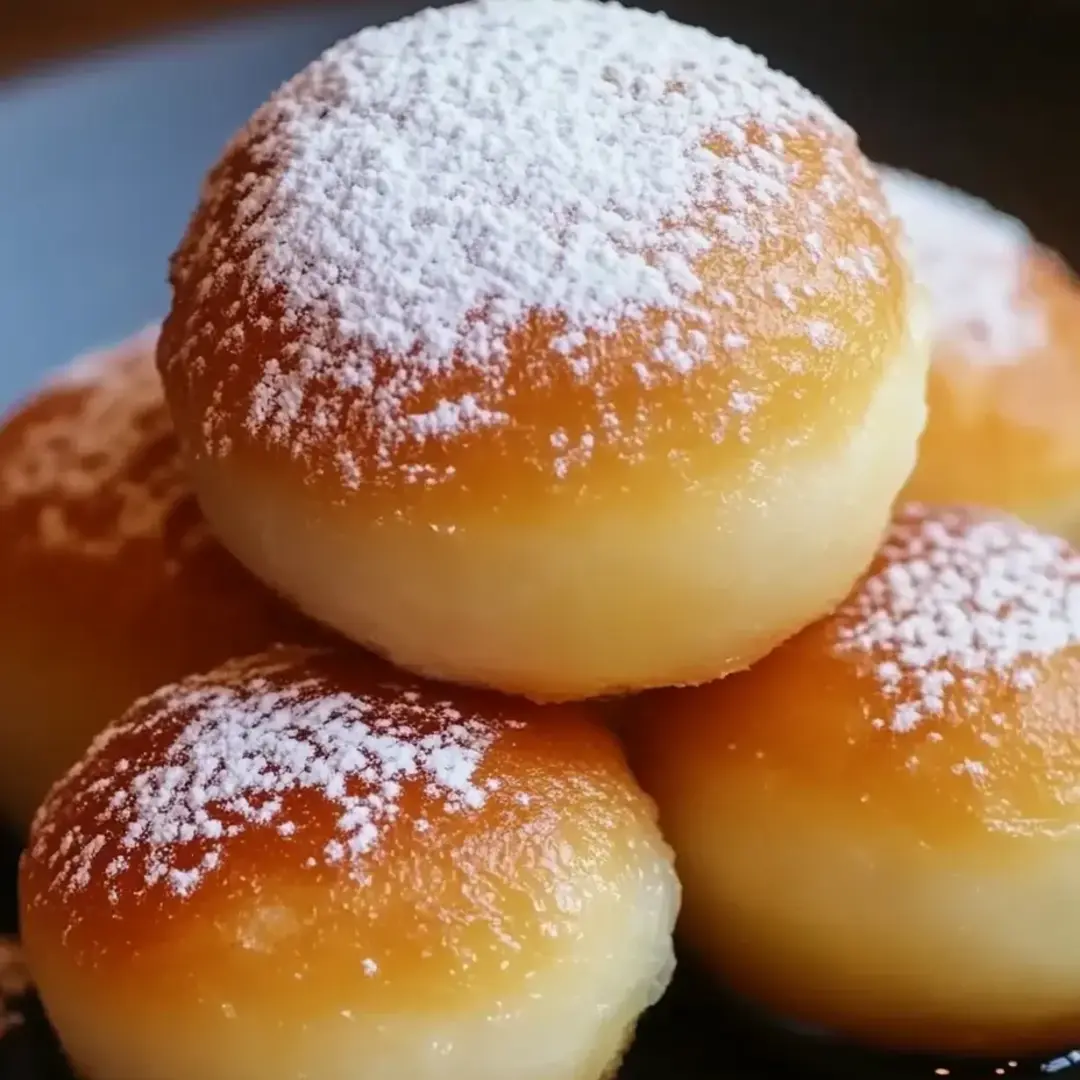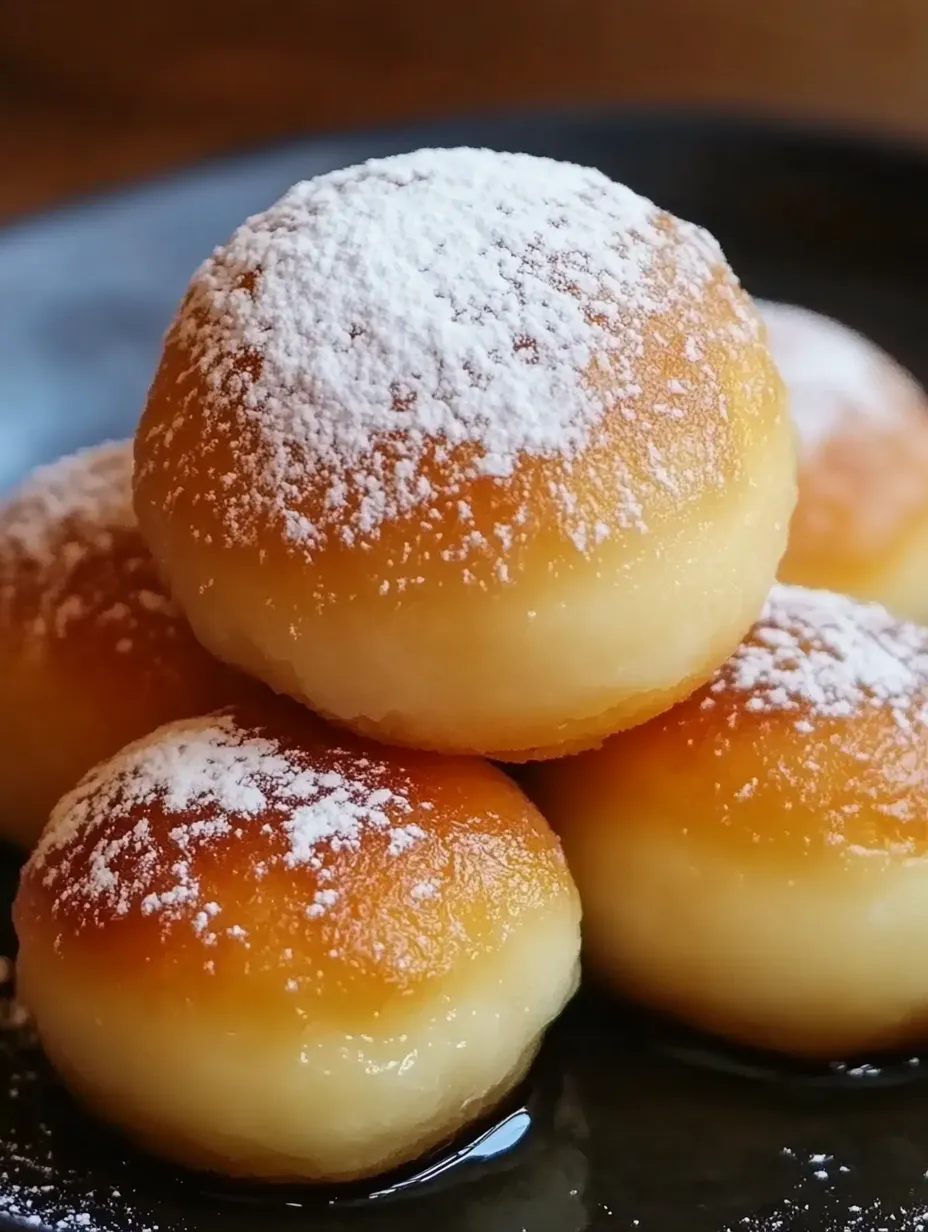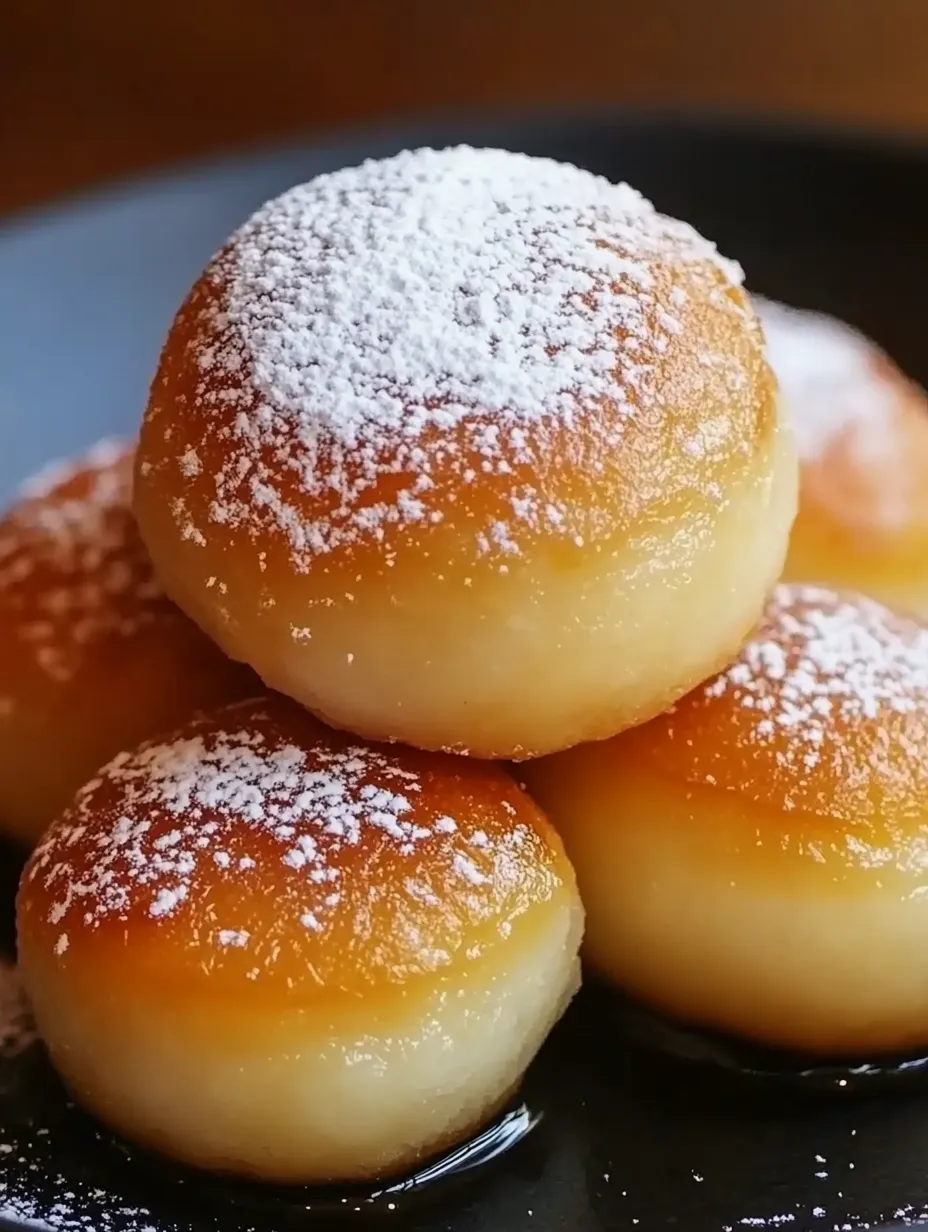 Pin it
Pin it
Potato mochi brings together two comfort food traditions in one irresistible bite - the familiar creaminess of mashed potatoes and the unique chewy texture of Japanese mochi. This fusion creation delivers a perfect balance of savory flavors and satisfying texture that makes it impossible to stop at just one. Whether served as an appetizer, snack, or side dish, these golden-brown nuggets of goodness will have everyone asking for your secret recipe.
I first discovered potato mochi at a fusion restaurant years ago and immediately had to recreate it at home. My first attempts were disasters - either too soggy or too dry. After many kitchen experiments (and quite a few laughs from my family), I finally perfected this version. Now it's our go-to comfort food on cold evenings, and the first thing my daughter requests when she visits from college.
Essential Ingredients
- Potatoes: Create the creamy, flavorful base of the dish. Choose starchy varieties like Russets or Yukon Golds for the smoothest texture. Look for firm potatoes with no green spots or sprouts for the best flavor.
- Glutinous rice flour: Provides the characteristic chewy texture that makes mochi special. Despite its name, this flour is naturally gluten-free. Choose a quality brand like Mochiko for consistent results.
- Soy sauce: Adds depth and umami flavor to each bite. Opt for naturally brewed soy sauce for richer flavor without artificial additives.
- Sugar: Just a touch balances the savory elements with subtle sweetness. Regular granulated sugar works perfectly here, though brown sugar can add a slight caramel note.
- Water: Creates the right consistency for the dough. Filtered water is ideal but tap water works fine in most areas.
- Oil for frying: Gives the mochi their golden exterior. Choose a neutral oil with a high smoke point like vegetable, canola, or rice bran oil.
 Pin it
Pin it
Detailed Cooking Instructions
- Step 1:
- Prepare your potatoes properly - Peel 2 medium-sized potatoes and cut them into even 1-inch chunks to ensure uniform cooking. Place in a pot of cold, salted water (the water should taste like the sea). Starting with cold water helps the potatoes cook evenly throughout. Bring to a boil over medium-high heat, then reduce to a simmer and cook until the potatoes are fork-tender, about 15-20 minutes.
- Step 2:
- Create the perfect mash - Drain the potatoes thoroughly in a colander, then return them to the hot pot for about 30 seconds, shaking gently. This step evaporates excess moisture, preventing a soggy dough later. Transfer to a large bowl and mash until completely smooth - lumps will affect the final texture. For ultra-smooth results, pass through a potato ricer or food mill if available.
- Step 3:
- Form your mochi dough - While the potatoes are still warm (not hot), gradually add 1 cup of glutinous rice flour, ½ cup of water, and 1 tablespoon of sugar. Mix gently with a wooden spoon or silicone spatula until just combined, then switch to hand-kneading. The warmth of the potatoes helps the ingredients bind properly. Knead for about 2-3 minutes until the dough feels elastic and smooth. It should be soft but not sticky - add a little more flour if needed.
- Step 4:
- Portion for perfect cooking - Lightly dust your hands with additional glutinous rice flour to prevent sticking. Divide the dough into approximately 16 equal portions (about 1½ tablespoons each). Roll each portion between your palms to form a smooth ball, then gently flatten to about ½-inch thickness. Place on a parchment-lined tray, making sure they don't touch each other.
- Step 5:
- Achieve the ideal fry - Heat ¼ inch of oil in a heavy-bottomed skillet over medium heat until it reaches approximately 350°F (when a small piece of dough sizzles immediately upon contact). Carefully place 4-5 mochi pieces in the hot oil, being careful not to crowd the pan. Fry until the bottoms are golden brown, about 2-3 minutes, then flip once and cook the other side for another 2 minutes.
- Step 6:
- Perfect the finishing touches - Transfer the fried mochi to a paper towel-lined plate to absorb excess oil. While still hot, brush or drizzle with soy sauce, which will sizzle slightly as it hits the hot mochi, infusing them with flavor. Immediately sprinkle with sesame seeds and chopped green onions while the soy sauce is still wet, helping the garnishes adhere.
- Step 7:
- Serve with care - Arrange on a serving plate while still warm. These are best enjoyed fresh from the pan when the contrast between the crispy exterior and chewy interior is most pronounced. If preparing for a party, you can keep them warm in a 200°F oven for up to 30 minutes.
Creative Variations to Try
The beauty of potato mochi lies in its adaptability. For a Japanese-Italian fusion, fold in 2 tablespoons of grated Parmesan and a pinch of dried basil into the dough. I've also had great success adding ¼ cup of finely minced kimchi for a Korean-inspired version that packs a flavorful punch. During fall gatherings, I sometimes substitute half the potato with roasted kabocha squash for a seasonal twist with beautiful orange hue and subtle sweetness.
Make-Ahead and Storage Tips
While potato mochi are best fresh, you can prepare components ahead of time to streamline the cooking process. The mashed potato mixture can be refrigerated for up to 24 hours; just bring it to room temperature before adding the rice flour. Alternatively, form the raw mochi and refrigerate them on a parchment-lined tray for up to 4 hours before frying. For longer storage, freeze the shaped, uncooked mochi on a tray, then transfer to a freezer bag for up to a month. Fry directly from frozen, adding about 1 minute to the cooking time.
 Pin it
Pin it
Perfect Pairing Suggestions
These savory bites pair beautifully with so many flavors. Serve alongside a tangy ponzu dipping sauce for traditional Japanese notes, or offer a sriracha mayo for a spicy kick. When I serve these at dinner parties, I often create a trio of dipping options – the aforementioned sauces plus a sweet chili sauce – arranged in small bowls surrounding the mochi. For a complete meal, they complement grilled fish or chicken teriyaki beautifully, with a simple cucumber salad on the side.
Troubleshooting Common Issues
If your mochi are browning too quickly on the outside while remaining doughy inside, your oil is too hot. Lower the heat and try again with the next batch. Conversely, if they're taking longer than 3-4 minutes per side to brown, increase the heat slightly. Should your dough feel too sticky when shaping, dust your hands with additional rice flour rather than incorporating more into the dough, which could make the final texture too firm.
I've found that using a mixture of half Russet and half Yukon Gold potatoes creates my ideal texture – the Russets provide fluffiness while the Yukon Golds add buttery richness. My grandmother initially scoffed at this "newfangled" recipe, claiming nothing could beat traditional mochi. After one bite, she not only asked for seconds but insisted I teach her how to make them for her mahjong group!
My final thought on potato mochi is that they represent everything wonderful about fusion cuisine – taking familiar ingredients and transforming them into something entirely new and exciting. The first time you bite through the crispy exterior into that chewy, potato-rich center, you'll understand why these humble ingredients combine to create something truly special. They're the perfect example of how home cooking can surprise and delight, turning ordinary ingredients into extraordinary experiences.
Frequently Asked Questions
- → Can I bake these mochi instead of frying?
- Yes, you can bake them at 350°F (175°C) for 15-20 minutes or until golden brown. Lightly brush them with oil before baking to help them crisp up.
- → Is this recipe gluten-free?
- The glutinous rice flour is naturally gluten-free despite its name (it refers to the sticky texture, not gluten content). However, make sure to use gluten-free soy sauce, as traditional soy sauce contains wheat.
- → Can I make the dough ahead of time?
- Yes, you can prepare the dough up to 24 hours in advance and store it covered in the refrigerator. Let it come to room temperature for about 30 minutes before shaping and frying.
- → What other flavors can I add to the mochi?
- You can mix in finely chopped herbs like chives or cilantro, add shredded cheese for a gooey center, incorporate finely minced garlic or ginger for extra flavor, or even add a little curry powder for a savory twist.
- → Why is my mochi dough too sticky?
- If your dough is too sticky, gradually add more glutinous rice flour, a tablespoon at a time, until it reaches a workable consistency. The moisture content of potatoes can vary, so adjustments may be needed.
